Hi,
I'm on the board of an HOA for a condo complex in Portland, Oregon. We've got an enclosed spa room that has been nothing but trouble this winter. I could go on and on about a lot of different problems we've been having, but I'm mainly trying to address one particular issue at the moment. When the hot tub is running, the entire room gets extremely damp. It's like a jungle in there. We left all of the windows slightly cracked but water has been condensing on every hard surface and dripping from the ceiling. There are metal grates in the ceiling right above the hot tub that are starting to disintegrate. Then the mold started to grow, and we shut the whole thing down to get it treated. We thought that the ventilation system might not be working, so we had someone check it out. The problem with the ventilation system is that there isn't one! There is no fan, and there is no passive venting either. There is a duct above the metal grates that I mentioned before, but it's sealed off on top.
We're looking at having a passive vent installed (one of those "chef hats" that spins as hot air escapes) but I can't help but wonder if there is some kind of formula that we should be following in terms of the amount of air that we need to be moving. The room is about 20'x20'. I can't speak to the capacity of the hot tub, but I will attach pictures.
I'm told that in the past, the hot tub was covered to prevent this problem, but it turned the tub into a slimy algae pool that no one wanted to soak in. So we haven't had the cover on in years.
Unfortunately, our pool service hasn't been able to offer any suggestions, so any advice that you can share would be much appreciated.
Thanks.
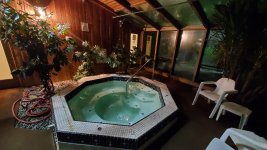
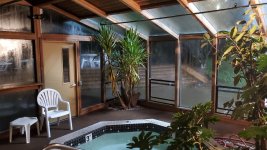
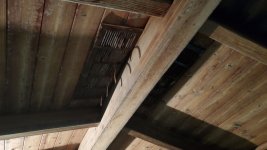
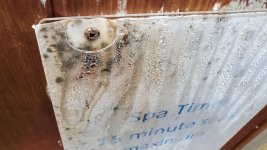
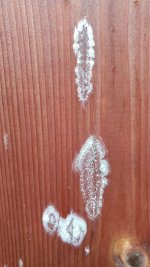
I'm on the board of an HOA for a condo complex in Portland, Oregon. We've got an enclosed spa room that has been nothing but trouble this winter. I could go on and on about a lot of different problems we've been having, but I'm mainly trying to address one particular issue at the moment. When the hot tub is running, the entire room gets extremely damp. It's like a jungle in there. We left all of the windows slightly cracked but water has been condensing on every hard surface and dripping from the ceiling. There are metal grates in the ceiling right above the hot tub that are starting to disintegrate. Then the mold started to grow, and we shut the whole thing down to get it treated. We thought that the ventilation system might not be working, so we had someone check it out. The problem with the ventilation system is that there isn't one! There is no fan, and there is no passive venting either. There is a duct above the metal grates that I mentioned before, but it's sealed off on top.
We're looking at having a passive vent installed (one of those "chef hats" that spins as hot air escapes) but I can't help but wonder if there is some kind of formula that we should be following in terms of the amount of air that we need to be moving. The room is about 20'x20'. I can't speak to the capacity of the hot tub, but I will attach pictures.
I'm told that in the past, the hot tub was covered to prevent this problem, but it turned the tub into a slimy algae pool that no one wanted to soak in. So we haven't had the cover on in years.
Unfortunately, our pool service hasn't been able to offer any suggestions, so any advice that you can share would be much appreciated.
Thanks.





Last edited by a moderator:

